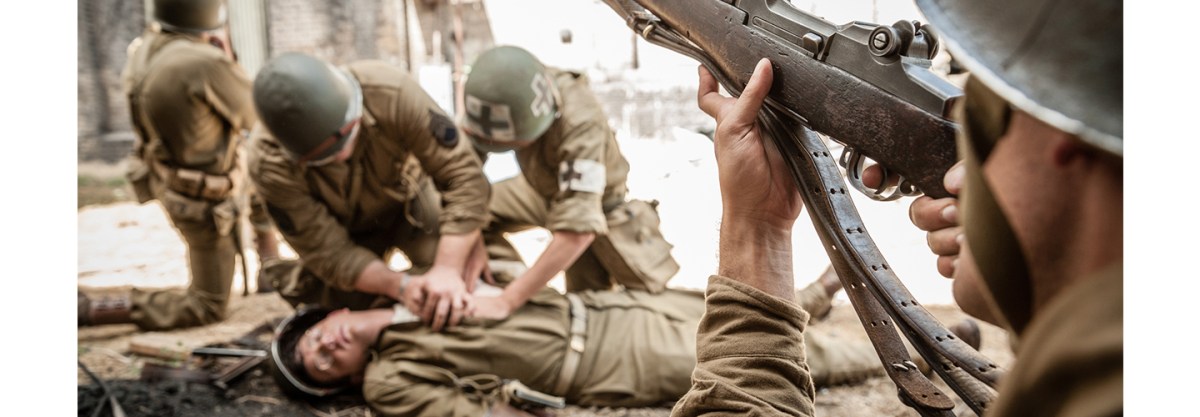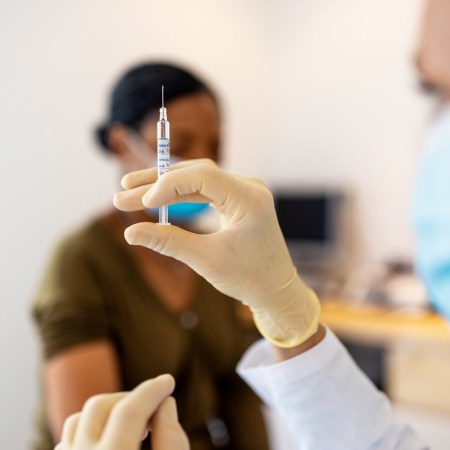By the end of 1943 Navy Lt. Commander James Luce had been having a pretty rough few months.
In October the physician had been chosen by the Office of Strategic Services, the spy-commando precursor to the CIA known better as the OSS, to help with medical needs for secret missions against the Japanese operating out of what was then Burma.
At the time Luce was recovering from injuries he sustained during the Pearl Harbor attack in Hawaii, but things only got worse from there, as a recent CIA report recalled.
“Dr. Luce arrived at the beginning of November 1943 – after an arduous journey, which included an airplane crash in Africa, travel by elephant and on foot, and temporary incapacitation due to malaria and pneumonia,” the report says.
Luce was sent to Ngumla, Burma, known to the OSS as FORWARD, well behind Japanese lines.
“As Dr. Luce recovered, he oversaw the construction of a rudimentary bamboo hospital, dispensary and surgery, all of which were ready by the time his medical supplies were air dropped to him on Christmas Eve 1943,” the CIA report says.
Luce had been sent in to help Dr. Archie Chun-Ming, the first physician to join up with the Coordinator of Information (COI), itself the OSS’s immediate predecessor.
In Burma their mission was to support a field team known as Detachment 101, which was to “orchestrate and support guerilla warfare.” (The CIA study says that when Chun-Ming was asked if he wanted to join the 101, he replied, “Heavens no! What happened to the other 100?”)
Luce’s time at FORWARD went so well that when the commander running that base transferred, he recommended Luce take over, while still attending to his medical duties for the guerilla fighters.
In stark contrast to today’s sterile operating rooms, Luce operated out of his bamboo medical facility where he once managed to perform brain surgery on a local fighter.
“The man had been carried by litter for more than three days to reach Luce. Among other injuries, the man was found to have a gaping hole in his forehead, through which destroyed brain tissue was oozing,” the CIA report says.
Helpers built a fire to boil water and sterilize instruments and Luce performed a 90-minute surgery while another officer hand-cranked a generator to keep the lights on in the room.
Incredibly, the surgery was a success, much to the joy of what Luce called the “small group” of local fighters who had collected outside the surgery room to keep tabs on the surgery’s progress.
The anecdote is one of several in the recent CIA report, written by former CIA doctor Lester Bush and published in the agency’s Studies in Intelligence periodical. The article details the exploits of the OSS medical personnel and the awards they racked up, including four Silver Stars and dozens of Bronze Stars, among others.
Starting from evaluating and caring for potential OSS recruits, the doctors, medics and assistants “eventually handled the medical supply program essential for partisans and in-place OSS agents; monitored their medical evacuation, when needed; and provided technical support to sensitive special projects.”
“Those who went behind the lines often parachuted to their destinations; some did so without any jump experience,” the article says. “Once in place they handled serious trauma cases, performed major surgeries in primitive settings, accomplished heroic medevacs, and treated a range of illness rarely seen in the United States.”
One of those to jump out of an airplane without even the least bit training for it was Frank Hurley, who at 27 was just a year out of medical school when the OSS sent him to help a Chinese radio operator in a remote, mountainous region of the Asian nation.
“Instead of making the approximately five-day hike, he opted to parachute in,” the article says. “He had never parachuted before and was dismayed that those who took him to the airplane did not even know how to put on a parachute.”
Hurley eventually figured it out, mostly, and made his jump.
“…[B]ut his descent was complicated by twisted lines, a temporary backward drift as he approached the ground, close encounters with city walls, and a final landing in a shallow well.”
Hurley was able to locating the ailing man, perform an appendectomy before an audience of “pipe-smoking Chinese doctors who had come to see their first operation,” and save the man’s life.
Hurley nearly died himself of heat exhaustion during the five-mile trek back to base, but later recalled that the whole ordeal was “the greatest thrill of my life.”
The CIA article says that casualty figures among the medical staffs for the OSS are “incomplete,” but at least three medics are known to have died – two in fatal airplane crashes and one in a railroad accident. “At least nine physicians, 10 medics, and two dentists were wounded or injured during their time in the field – through gunshot wounds, by mortar shrapnel, during bombing raids, or on parachute jumps.”
As the OSS was disbanded, to be replaced years later by the CIA, America’s spies remembered the need for medical professionals willing to take the same risks as the spies themselves.
“When the public thinks about the Central Intelligence Agency, it is natural to think about espionage and covert action,” Bush writes. “Medicine does not usually come to mind. But medical professionals have played and continue to play vital roles in CIA operations… In spite of all that CIA medical professionals do, their stories are not widely told – and given the nature of their assignments, understandably so.”
This article was featured in the InsideHook newsletter. Sign up now.
























